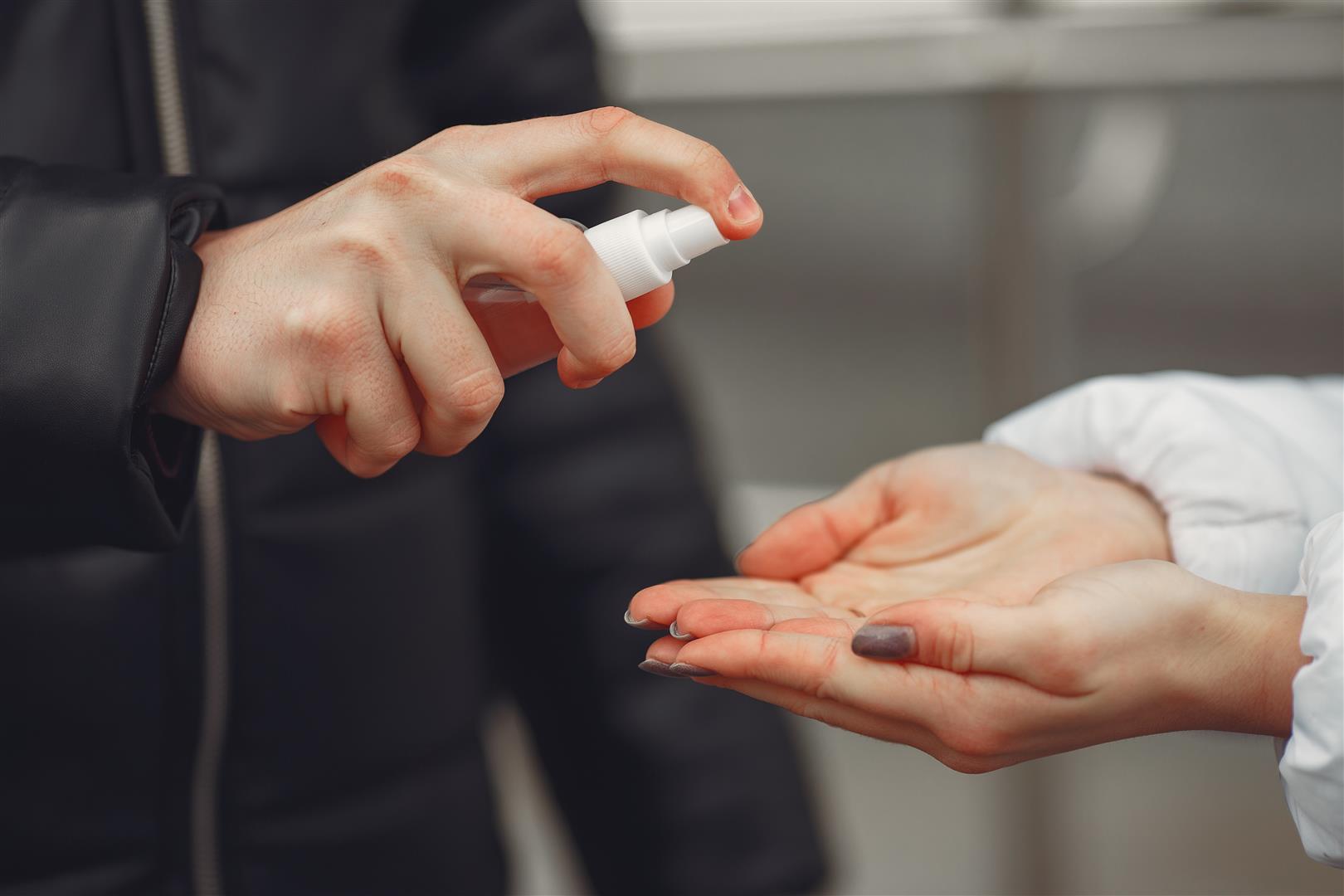NEW SOLUTIONS
How to create disinfectant like a professional
There is a lot of demand for hand sanitiser at the moment. Some places have shortages, some people create their own. We asked our formulation experts from the Jebsen & Jessen Consumer Innovation Centre to shed a light on how commercial hand sanitisers and disinfectant are made.
The right type of alcohol
Hand sanitiser and disinfectant have the goal of destroying bacteria and viruses, keeping your hands clean and you healthy. All of that starts with the right type of alcohol. There are three different types to distinguish:
Methyl Alcohol
This type of alcohol is not consumed by humans. It is toxic and can cause skin irritations. It is most often used as an industrial solvent.
Ethyl Alcohol
This is the only consumable type of alcohol. Alcoholic beverages use ethyl alcohol and it is also often used in hand sanitisers and disinfectants. Depending on the required guidelines from local FDA, the alcohol volume usually has to be around 70% or higher.
Isopropyl Alcohol
This type of alcohol can also be used in hand sanitisers and disinfectants. However, it has a strong and sharp smell and is not commonly used in personal care products.
Finishing up a hand sanitiser spray
Hand sanitiser spray can use ethyl or isopropyl alcohol. It will look similar to rubbing alcohol.
The easiest way to do create a hand sanitiser spray is to use alcohol 95% and combine it with water. The water must be clean. An example is drinking water.
Moreover, it is possible to add moisturising agents to the mix. Formulations often use glycerine to avoid drying out of the skin. It is an easy to use, affordable moisturising ingredient. Thanks to moisturisers the skin gains moisture. They also help to prevent the skin from drying out again. Moisturisers can work in two ways: they can either trap moisture in our skin that already exists, or they can restore the lost moisture in the outer layer of skin.
Creating a hand sanitiser gel
Hand sanitiser gel is a more advanced disinfectant and can include many additional ingredients. Often gels are preferred, as they allow a more thorough cleaning of the hands.
The key ingredients for hand sanitiser gel are thickeners and pH adjusters. They give alcohol hand sanitiser its gel texture. When using thickeners to create alcohol hand sanitizer gel, each thickener will have conditions that impact the initial pH value. Initially, such gels are quite acidic. Getting the right pH value allows mixed-ingredients to gradually become clear gel and more viscous. This is achieved by adding pH adjusters. PH adjusters, for example, act as alkaline salt to create a gel texture.
Additional ingredients
Hand sanitisers allow for many additional ingredients to be added. For example, EDTA can be used to bind to metals and prevent them from participating in chemical reactions, which might cause discolouration. Other common ingredients are colour, fragrance, anti-bacterial ingredients, and other extracts such as whitener.
Finishing up the gel
To create hand sanitiser gel, our formulation experts follow these steps:
1. Prepare all ingredients
2. Mix EDTA and Glycerin in Water
3. Slowly pour thickener into your EDTA-Glycerin mixture, stirring until it is completely dispersed
4. Add 95% Ethanol and stir
5. Add TEA to obtain a clear gel texture
The complete guide formulations
Here is a starting formulation that can help to create hand sanitiser gels.
1. Water 26.35 g.
2. Disodium EDTA 0.05 g. (binds to metals and prevents them from participating in chemical reactions that might cause discolouration)
3. Thickener; COVACRYL SP/ Carbopol 940/ Carbopol Ultrez 20/ others 0.50 g.
4. 95% Ethyl Alcohol 70.00g.
5. Glycerin 3.00 g. (moisturizing agent)
6. Triethanolamine 99% (TEA) 0.10 g. (pH adjuster)
Get in touch with our teams for more information
Our teams are always happy to hear from you. Get in touch if you have any questions or need help in creating a hand sanitiser spray or disinfectant gel.
Related Articles & Trends
EUDRAGIT® Workshop: Exploring 70 Years of Success
Jebsen & Jessen Ingredients and Evonik co-organised a workshop focused on EUDRAGIT® and its applications in pharmaceuticals and personal care.
How to Combat Summer Acne: Skincare Strategies and Formulation Guide
Discover expert strategies for preventing and managing summer acne with our comprehensive guide: “How to Combat Summer Acne: Skincare Strategies and Formulation Guide”
Jebsen & Jessen: Ingredients for a Better Tomorrow
We at Jebsen & Jessen Ingredients are excited to share our latest video. This video offers a visual journey into how our diverse product range enhances daily routines, adding value and quality from morning to night.





